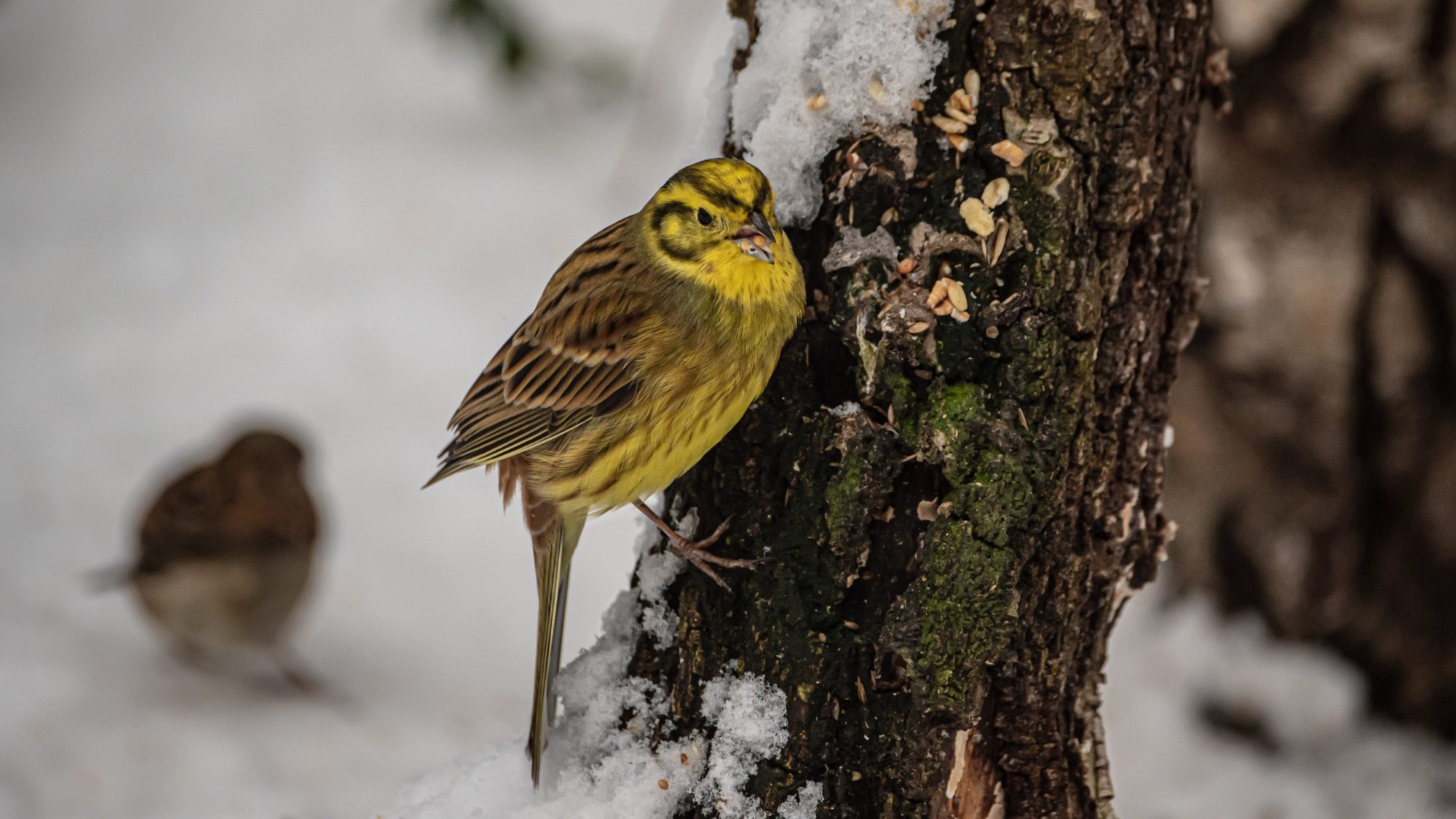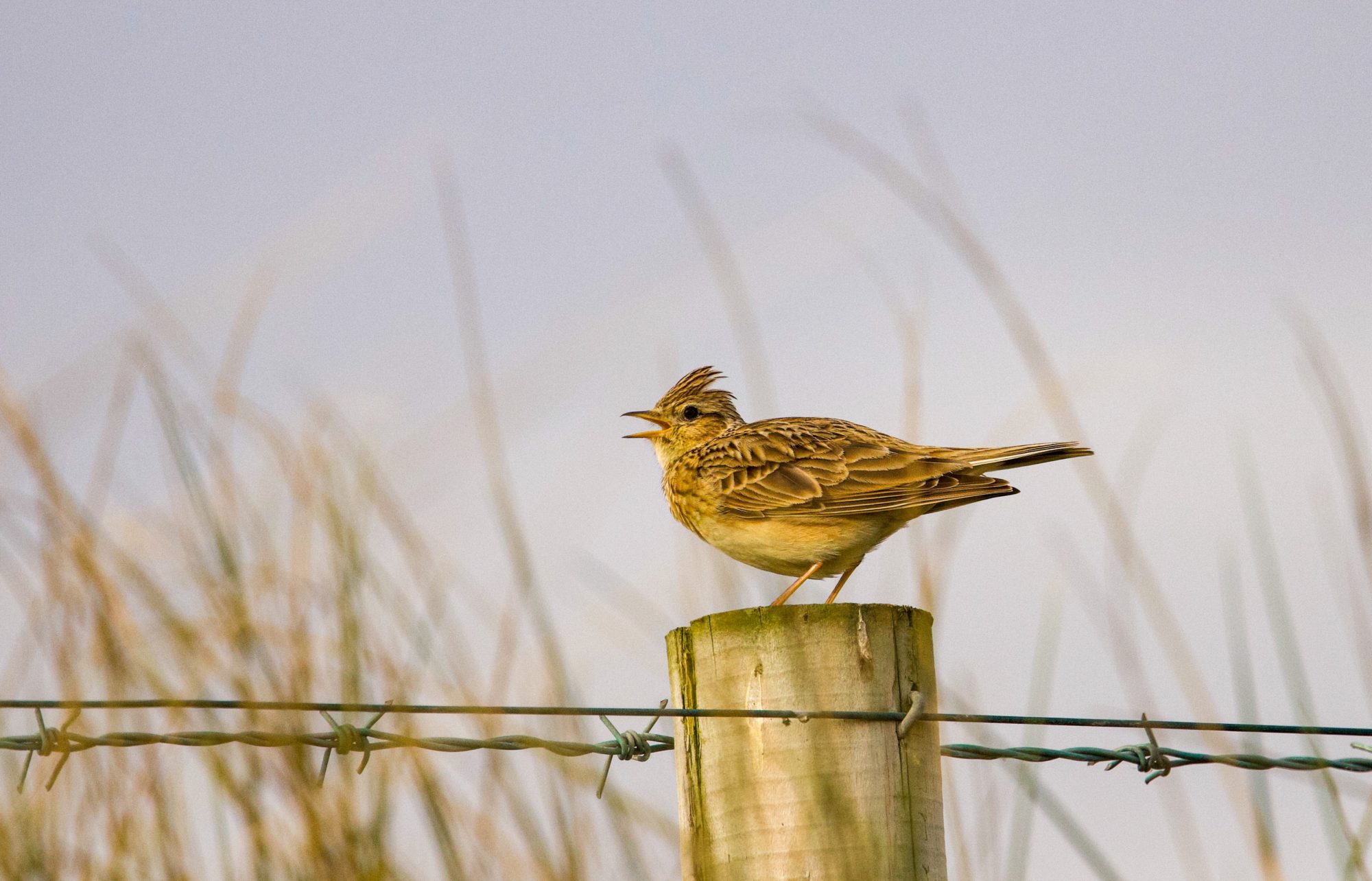Farmland Bird Conservation
Sitting (or perching) near the top of the food chain, farmland birds are useful indicators of the quality of agricultural environments.
Intensive farming and agriculture practices have led to reduced food availability and loss of habitat diversity, leading to significant decline in populations, with an average 48% decline since 1970 across the 19 farmland bird indicator species.
On Earth Trust Farm we are actively addressing this decline, focusing on the needs of species such as yellowhammer (which has declined by 54%), skylark (51%) and grey partridge (a staggering 87%).
What we are doing
Feeding the birds
Rather than following the arable farming trend of sowing crops in autumn straight after the previous crop has been removed, we leave approximately 10 hectares of our fields uncultivated over winter.
This enables spilt grain and broad-leaved weed seeds to feed birds such as corn buntings and yellowhammers, helping them survive the colder months.
We also distribute 33kg of seed three times a week during ‘the hungry gap’ in winter when food is in short supply- that’s two tonnes of extra food each year.


Providing diverse habitat
Earth Trust Farm is a mixed farm of 500 hectares, a third of which is arable and a third grassland. By achieving this balance of land use, together with many metres of hedge in between the fields, we provide much needed habitat diversity for wildlife, offering food, shelter and space to breed and raise young.
A walk on Earth Trust Farm is often accompanied by the beautiful sound of a skylark singing. Skylarks, like other birds, require a diversity of habitats to raise their young, nurturing up to two or three broods each year.
Crops can be tall and dense, preventing skylarks raising more than one early brood. We create around 40 ‘skylark plots’ every year. These 4m x 4m areas are used as a landing strip, enabling the birds to access the crops, forage and raise healthier young in greater numbers, thereby sustaining a healthy population.
The Impact
By farming this way, we are exploring and demonstrating more sustainable models for farmed food production, whilst still protecting wildlife.
Our annual farm-wide breeding bird survey has recorded over 40 different species, including 21 species identified as being of conservation concern.